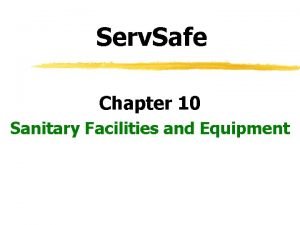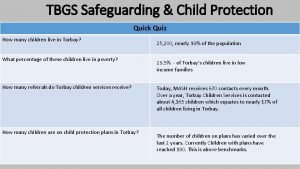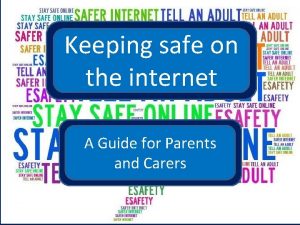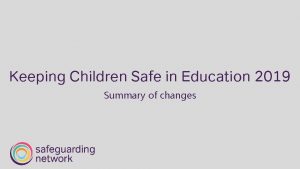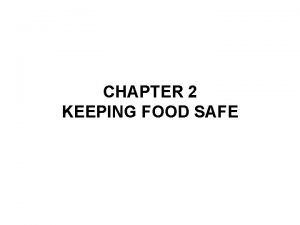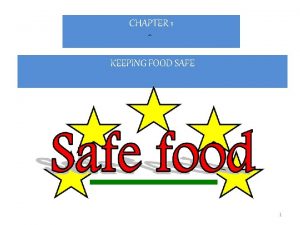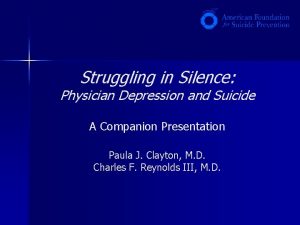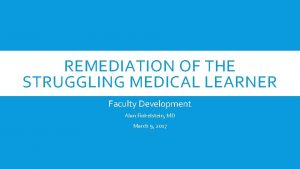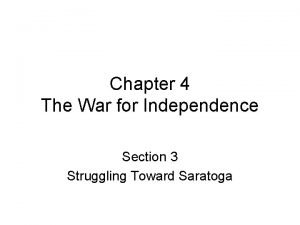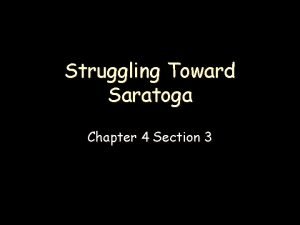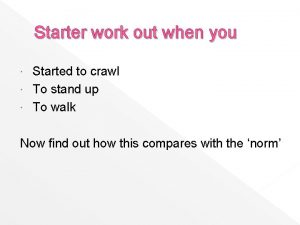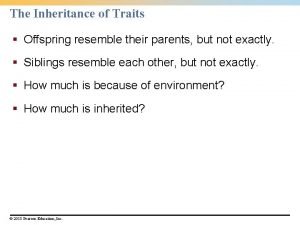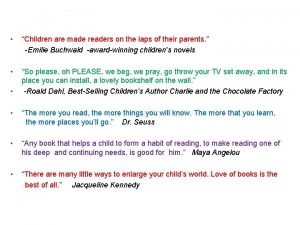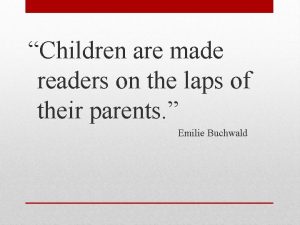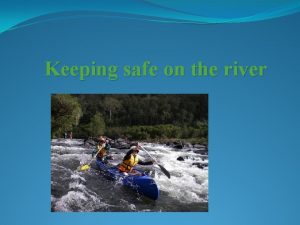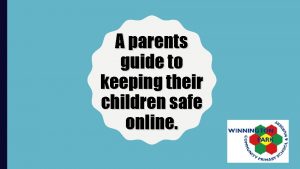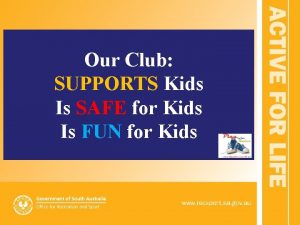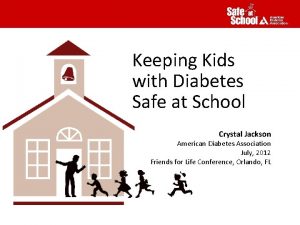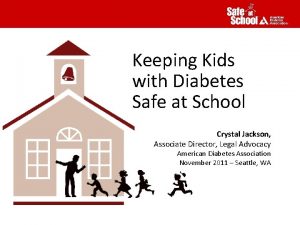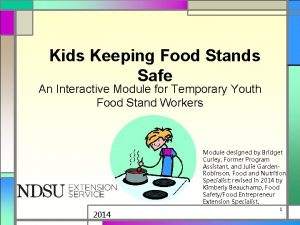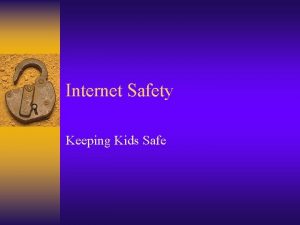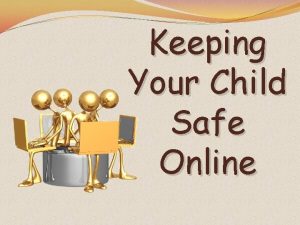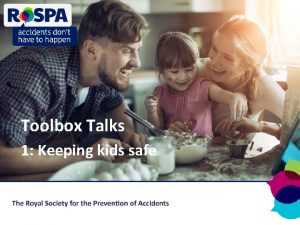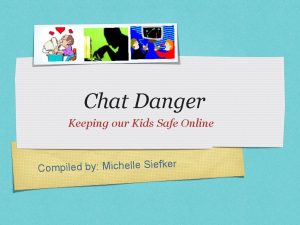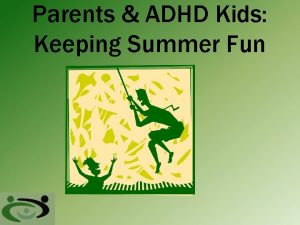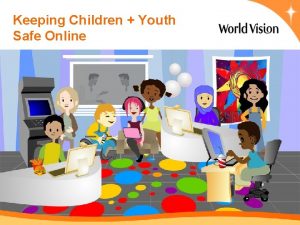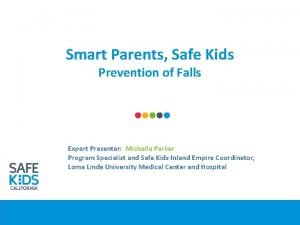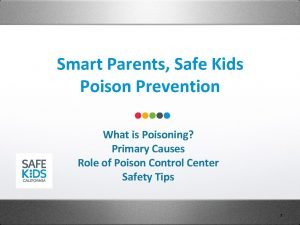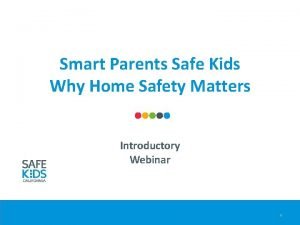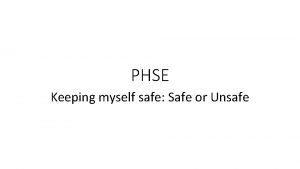Keeping Kids Safe When their Parents are struggling
























- Slides: 24

Keeping Kids Safe When their Parents are struggling with Substance Use: From Preventing Removal to Reunification

Source: WI Department of Children & Families Out-Of-Home Care Report Annual Report for Calendar Year 2015

Source: WI Department of Children & Families Out-Of-Home Care Report Annual Report for Calendar Year 2016


SOURCE: Adoption and Foster Care Analysis and Reporting System (AFCARS) FY 2015 data 2

SOURCE: Adoption and Foster Care Analysis and Reporting System (AFCARS) FY 2016 data 2

Impact of Parental Substance Use on Children

Impending Danger Threats 3. One or both parents’/caregivers’ behavior is dangerously impulsive or they will not/cannot control their behavior. § Substance abuse renders the parent/caregiver incapable of routinely/consistently attending to child’s basic needs. § Parent/caregiver has addictive patterns or behaviors (e. g. addiction to substances, gambling, computers) that are uncontrolled and leave the child in potentially severe situations (e. g. failure to supervise or provide other basic care)

Impending Danger Threats 10. Living arrangements seriously endanger the child’s physical health. • The family home is being used for methamphetamine production; products and materials used in the production of methamphetamine are being stored and are accessible within the home. • Occupants in the home, activity within the home, or traffic in and out of the home present a specific threat to the child that could result in severe consequences to the child. • People who are under the influence of substances that can result in violent, sexual, or aggressive behavior are routinely in the home or have frequent access

Safety Threshold Criteria O – Observable condition V – Vulnerable to the condition O – Out-of-control I – Imminent S - Severe

Lack of funds Lack of coordination Difficulty engaging parents in change Knowledge gaps Insufficient services Differences in perspective

Out-of-Home Safety Management Safety plan is revised when: § positive or negative changes related to parent/caregiver protective capacities occur - OR § Changes to impending danger threats to child safety occur – including threshold criteria

Out-of-Home Safety Management Information gathered from the parents/caregivers, child, and out-of-home care provider is used to: § Assess if impending danger threats in the parental home are in effect. § Determine if conditions have changed or can be controlled with the provision of services to allow the child to return home with a sufficient, feasible, and sustainable in-home safety plan.

PERMANENCY SAFETY

Concurrent Planning • A parent has a history of substance abuse or is chemically dependent and/or has a history of treatment failures or the child was drugexposed at the time of birth. • A parent's only visible support system is a drug culture, with no significant effort to change over time.


UA SAFETY


Collaboration § § Cross Training Collocation Cross-System Partnerships Cross-System Information Sharing





Resources Parental Substance Use and the Child Welfare System § https: //www. childwelfare. gov/pub. PDFs/parentalsubabuse. pdf Protecting Children in Families Affected by Substance Use Disorders (Children’s Bureau) § https: //www. childwelfare. gov/pub. PDFs/substanceuse. pdf National Center on Substance Abuse and Child Welfare § https: //ncsacw. samhsa. gov/
 Mikael ferm
Mikael ferm Romeo juliet prologue translation
Romeo juliet prologue translation Servsafe cutting board colors
Servsafe cutting board colors Ted safeguarding
Ted safeguarding Keeping an infant safe and well section 7-3
Keeping an infant safe and well section 7-3 Keeping safe on the internet
Keeping safe on the internet Promoting infant health section 7-2
Promoting infant health section 7-2 Keeping children safe in education 2019
Keeping children safe in education 2019 Bimetallic stemmed thermometer definition
Bimetallic stemmed thermometer definition Keeping food safe chapter 1
Keeping food safe chapter 1 Kids r kids west cobb
Kids r kids west cobb Parents parents
Parents parents Fiche frida kahlo
Fiche frida kahlo Frida kahlo grand parents
Frida kahlo grand parents Safe people safe places
Safe people safe places Safe feed safe food
Safe feed safe food Struggling in silence
Struggling in silence Remediation of the struggling medical learner
Remediation of the struggling medical learner Chapter 4 section 3 struggling toward saratoga
Chapter 4 section 3 struggling toward saratoga Chapter 4 section 3 struggling toward saratoga
Chapter 4 section 3 struggling toward saratoga The outsiders adapted for struggling readers
The outsiders adapted for struggling readers Gesture development chart
Gesture development chart Why do offspring resemble their parents
Why do offspring resemble their parents Children are made readers on the laps of their parents
Children are made readers on the laps of their parents Children are made readers on the laps of their parents
Children are made readers on the laps of their parents


